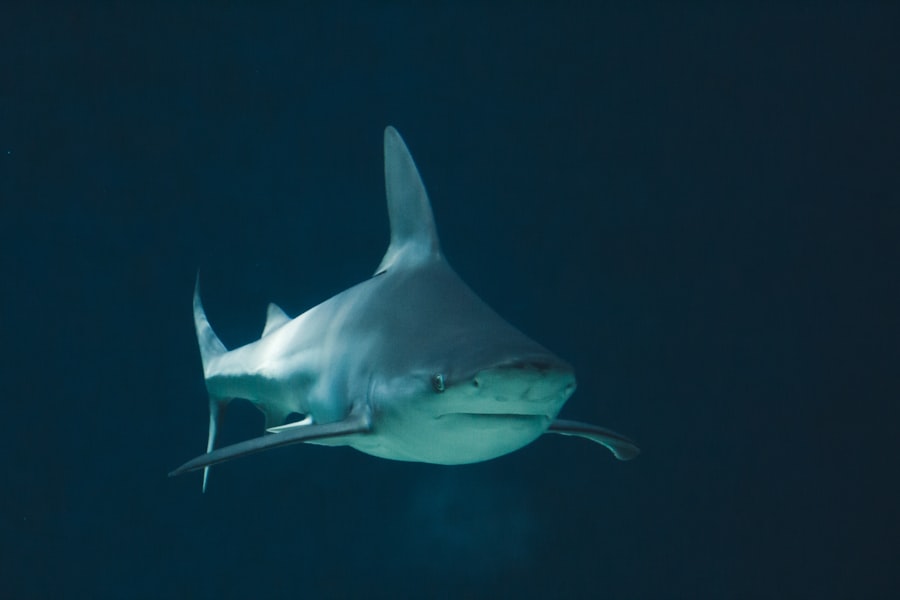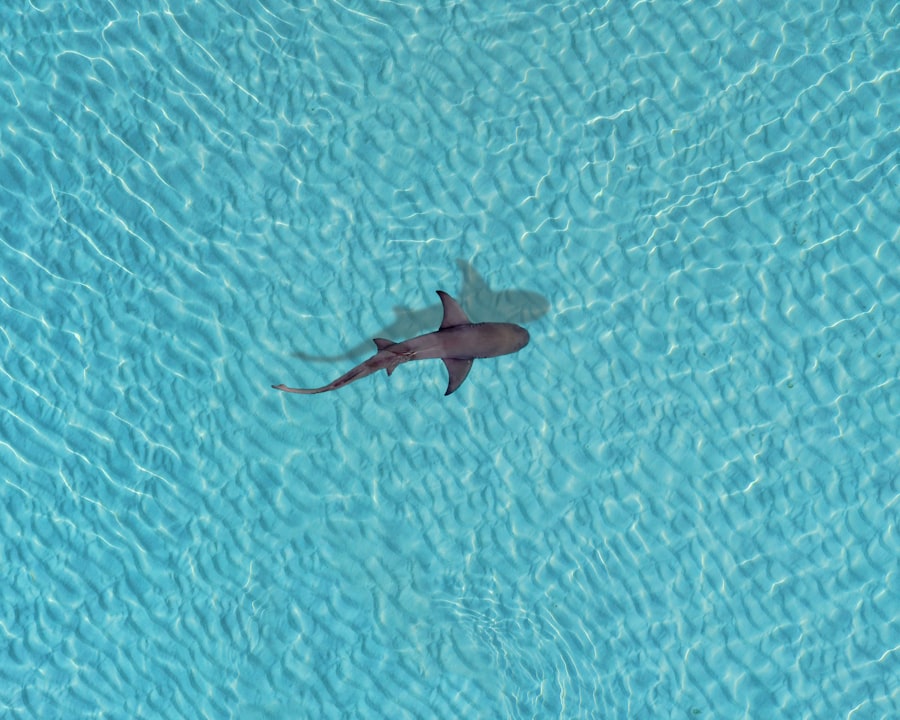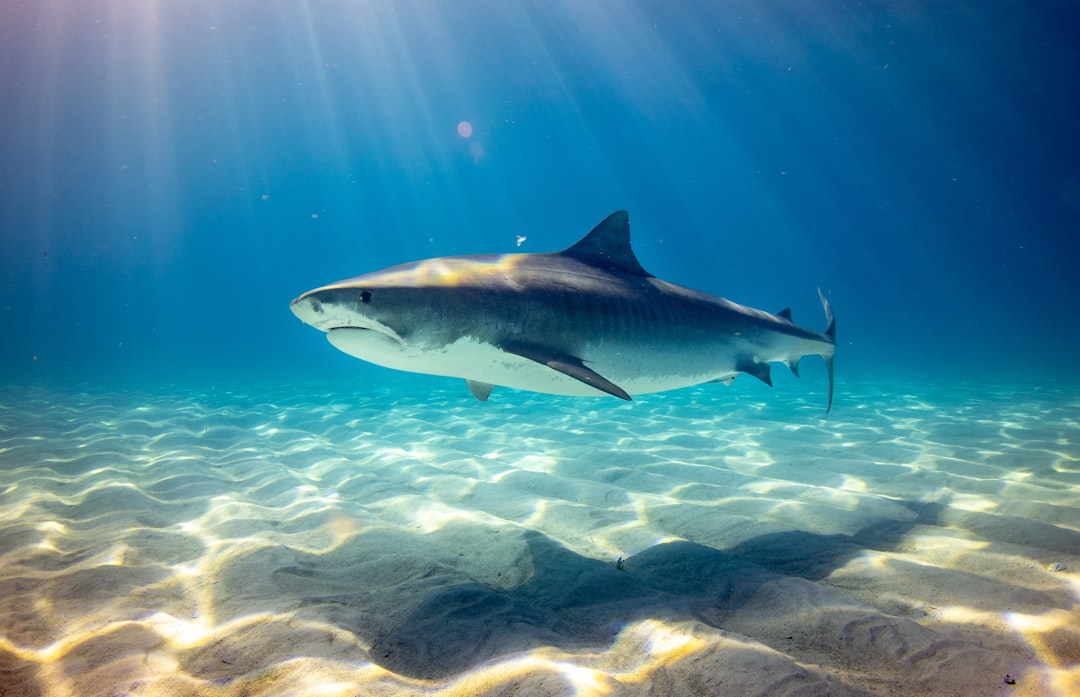The Drake Passage, a turbulent stretch of water between the southern tip of South America and Antarctica, is not only known for its treacherous conditions but also for its unique marine biodiversity. Among the myriad of species that inhabit these frigid waters, sharks play a crucial role in the ecosystem. These apex predators are often overlooked in discussions about marine life, yet they are integral to maintaining the balance of the Southern Ocean’s complex food web.
The sharks of the Drake Passage are not just fascinating creatures; they are emblematic of the resilience and adaptability of life in one of the planet’s most extreme environments.
Their presence is indicative of a healthy marine ecosystem, as they help regulate populations of other species and contribute to the overall health of their environment.
Understanding these sharks is essential for marine biologists and conservationists alike, as it provides insights into the broader ecological dynamics at play in the Southern Ocean. As research continues to unveil the mysteries surrounding these enigmatic creatures, it becomes increasingly clear that they deserve attention and protection.
Key Takeaways
- Drake Passage is a crucial habitat for a diverse range of shark species, making it an important area for research and conservation efforts.
- The unique environment of the Southern Ocean creates a challenging and mysterious habitat for sharks, with cold temperatures and strong currents shaping their behavior and ecology.
- The diversity of shark species in the Drake Passage highlights the importance of understanding their role in the ecosystem and the potential impacts of climate change and human activities on their populations.
- Sharks play a crucial role in maintaining the balance of the Southern Ocean ecosystem, influencing the abundance and behavior of other marine life through predation and competition.
- The mysterious behavior of Drake Passage sharks, including their migration patterns and feeding habits, presents a fascinating area of study for researchers and conservationists.
The Unique Environment of the Southern Ocean
The Southern Ocean is characterized by its cold temperatures, strong currents, and rich nutrient availability, creating a unique habitat that supports a diverse array of marine life. This oceanic expanse is defined by its distinct physical and chemical properties, which differ significantly from those of other oceans. The cold waters are rich in phytoplankton, forming the base of the food chain and supporting a variety of species, including krill, fish, and marine mammals.
The nutrient upwelling in this region is a result of the Antarctic Circumpolar Current, which brings nutrient-rich waters from the depths to the surface, fostering an environment teeming with life. The harsh conditions of the Southern Ocean also shape the adaptations of its inhabitants. Species that thrive here have evolved to withstand extreme cold and turbulent waters.
For sharks, this means developing specialized physiological traits that allow them to hunt effectively in icy temperatures. The unique environment not only influences the behavior and biology of sharks but also plays a significant role in their distribution and abundance. As climate change continues to impact ocean temperatures and currents, understanding this unique environment becomes increasingly critical for predicting how shark populations may respond.
The Diversity of Shark Species in the Drake Passage

The Drake Passage is home to a surprising diversity of shark species, each adapted to the specific conditions of the Southern Ocean. Among these species are the well-known leopard shark and the lesser-known dogfish shark, both of which exhibit unique adaptations that enable them to thrive in cold waters. The leopard shark, with its distinctive markings, is often found in shallower areas where it hunts for fish and invertebrates.
In addition to these species, researchers have identified several other sharks inhabiting the Drake Passage, including various species of hammerhead and mako sharks. Each species plays a distinct role within the ecosystem, contributing to the overall biodiversity of the region.
The presence of such a variety of sharks highlights the ecological richness of the Southern Ocean and underscores the importance of ongoing research to better understand their behaviors and interactions within this unique marine environment.
The Role of Sharks in the Ecosystem of the Southern Ocean
| Shark Species | Population | Prey | Role in Ecosystem |
|---|---|---|---|
| Antarctic Sleeper Shark | Unknown | Fish, squid, and other sharks | Top predator, helps maintain balance in food web |
| Greenland Shark | Unknown | Fish, seals, and other marine mammals | Top predator, scavenger, helps regulate marine mammal populations |
| Patagonian Toothfish | Unknown | Fish, squid, and crustaceans | Regulates fish and squid populations, helps maintain biodiversity |
Sharks serve as apex predators in the Southern Ocean, playing a vital role in maintaining the balance of marine ecosystems. By preying on various fish species and other marine organisms, they help regulate populations and ensure that no single species dominates the ecosystem. This predatory behavior fosters biodiversity by allowing multiple species to coexist and thrive within their habitats.
The removal or decline of shark populations can lead to significant shifts in marine ecosystems, often resulting in overpopulation of certain species and subsequent ecological imbalances. Moreover, sharks contribute to nutrient cycling within their environments. As they hunt and consume prey, they facilitate energy transfer through different trophic levels.
Their waste products also provide nutrients that support primary producers like phytoplankton, which form the foundation of the food web. This interconnectedness highlights the importance of sharks not only as predators but also as essential components of nutrient dynamics within the Southern Ocean.
The Mysterious Behavior of Drake Passage Sharks
Despite their ecological significance, much about the behavior of sharks in the Drake Passage remains shrouded in mystery. Researchers have observed intriguing patterns in their movements and feeding habits, yet many questions remain unanswered. For instance, some species exhibit migratory behaviors that coincide with seasonal changes in prey availability or water temperature.
Understanding these migratory patterns is crucial for conservation efforts, as it can inform protective measures during critical periods in their life cycles. Additionally, social behaviors among shark species are still being studied. Some researchers have noted instances of group hunting or social interactions among individuals, suggesting a level of complexity in their behavior that warrants further investigation.
These observations challenge traditional perceptions of sharks as solitary hunters and open up new avenues for research into their social structures and communication methods.
The Threats Facing Drake Passage Sharks

Sharks in the Drake Passage face numerous threats that jeopardize their populations and overall health. One significant concern is overfishing, driven by both commercial fishing practices and illegal fishing activities. As demand for shark fins and meat continues to rise globally, many shark species are being targeted unsustainably.
This not only threatens individual species but also disrupts entire ecosystems by removing key predators from their habitats. Climate change poses another critical threat to sharks in this region. Rising ocean temperatures can alter prey availability and distribution, forcing sharks to adapt or migrate to new areas in search of food.
Additionally, ocean acidification resulting from increased carbon dioxide levels can impact marine life at all levels of the food chain, further complicating survival for these apex predators. Addressing these threats requires concerted efforts from governments, conservation organizations, and local communities to implement sustainable fishing practices and protect critical habitats.
Research and Conservation Efforts for Drake Passage Sharks
In response to the challenges facing sharks in the Drake Passage, researchers and conservationists have initiated various efforts aimed at understanding and protecting these vital species. Collaborative research projects involving universities, governmental agencies, and non-profit organizations have been established to study shark populations, their behaviors, and their ecological roles within the Southern Ocean. These studies often employ advanced technologies such as satellite tracking and underwater cameras to gather data on shark movements and interactions with other marine life.
Conservation efforts are equally important in safeguarding shark populations from overfishing and habitat degradation. Marine protected areas (MPAs) have been proposed or established in certain regions to provide safe havens for sharks and other marine organisms. These MPAs aim to limit human activities that could harm shark populations while promoting sustainable practices among local fisheries.
Public awareness campaigns also play a crucial role in educating communities about the importance of sharks and advocating for their protection.
The Interactions Between Sharks and Other Marine Life in the Southern Ocean
The interactions between sharks and other marine life in the Southern Ocean are complex and multifaceted. As apex predators, sharks influence not only their prey populations but also other predator species within their ecosystems. For example, by preying on certain fish species, sharks can indirectly benefit smaller fish populations by preventing larger competitors from dominating resources.
This dynamic interplay highlights the interconnectedness of marine life in this region. Additionally, sharks often share their habitats with various marine mammals such as seals and sea lions, which can also be prey for certain shark species. Understanding these predator-prey relationships is essential for comprehending how energy flows through the ecosystem and how changes in one population can ripple through others.
Researchers continue to explore these interactions to gain insights into ecosystem health and resilience.
The Importance of Studying Drake Passage Sharks
Studying sharks in the Drake Passage is crucial for several reasons. First and foremost, it enhances understanding of marine ecosystems and their dynamics. By examining how sharks interact with other species and their environment, researchers can gain valuable insights into ecological processes that are vital for maintaining biodiversity.
This knowledge is essential for effective conservation strategies aimed at protecting not only sharks but also the broader marine environment. Furthermore, studying these sharks can provide critical information about climate change impacts on marine life. As apex predators, sharks are sensitive indicators of ecosystem health; changes in their populations can signal shifts in environmental conditions or prey availability.
Monitoring shark populations can thus serve as an early warning system for broader ecological changes occurring within the Southern Ocean.
The Future of Drake Passage Sharks in a Changing Climate
The future of sharks in the Drake Passage is uncertain due to ongoing climate change and its associated impacts on marine ecosystems. As ocean temperatures rise and currents shift, sharks may be forced to adapt or migrate to new areas where conditions are more favorable for survival. This could lead to changes in population dynamics and distribution patterns that may have cascading effects on other marine species.
Conservation efforts will be paramount in ensuring that shark populations remain resilient amid these changes. Protecting critical habitats, implementing sustainable fishing practices, and fostering international cooperation will be essential components of any strategy aimed at safeguarding these apex predators for future generations. As scientists continue to study how climate change affects marine life, proactive measures will be necessary to mitigate potential threats facing sharks in this unique environment.
The Fascination and Intrigue Surrounding Drake Passage Sharks
The allure surrounding sharks in the Drake Passage extends beyond their ecological significance; it encompasses a sense of mystery and intrigue that captivates researchers and enthusiasts alike. These creatures embody both beauty and danger, evoking fascination while reminding humanity of nature’s raw power. Their adaptations to one of Earth’s most extreme environments inspire awe and curiosity about how life persists under such challenging conditions.
As public interest grows regarding marine conservation issues, sharks have become emblematic symbols for broader environmental movements. Their plight serves as a rallying point for advocates seeking to protect not only sharks but also entire ecosystems threatened by human activities. By fostering a deeper understanding of these remarkable creatures through research and education initiatives, society can cultivate a greater appreciation for their role within our oceans—ultimately leading to more effective conservation efforts aimed at preserving both sharks and their habitats for generations to come.
The Drake Passage, a treacherous stretch of water between the southern tip of South America and Antarctica, is not only known for its challenging sailing conditions but also for its diverse marine life, including various species of sharks. For those interested in exploring more about the unique geographical features and marine biodiversity of this region, you might find the article on MyGeoQuest particularly insightful. This resource delves into the fascinating aspects of the Drake Passage and its ecological significance, offering a broader understanding of why this area is crucial for marine research and conservation efforts.
WATCH NOW! Drake Passage: Earth’s Deadliest Waters Revealed
FAQs
What is the Drake Passage?
The Drake Passage is the body of water between the southern tip of South America and the northern tip of the Antarctic Peninsula. It is known for its rough seas and strong winds.
What types of sharks are found in the Drake Passage?
Sharks commonly found in the Drake Passage include the Antarctic lanternshark, the southern sleeper shark, and the porbeagle shark. These sharks are well adapted to the cold waters of the region.
Are sharks in the Drake Passage dangerous to humans?
While sharks in the Drake Passage are not known to be aggressive towards humans, it is always important to exercise caution when in the presence of any wild animal, including sharks.
What is the role of sharks in the Drake Passage ecosystem?
Sharks play a crucial role in maintaining the balance of the marine ecosystem in the Drake Passage. They help regulate the populations of other marine species and contribute to the overall health of the ocean environment.
Are there conservation efforts in place to protect sharks in the Drake Passage?
Conservation efforts to protect sharks in the Drake Passage are ongoing, with a focus on sustainable fishing practices, marine protected areas, and research to better understand and protect shark populations in the region.
